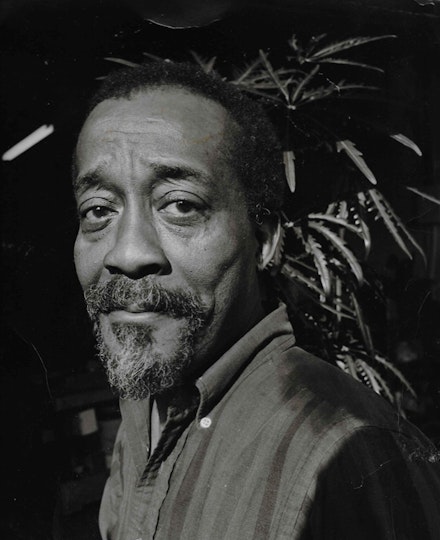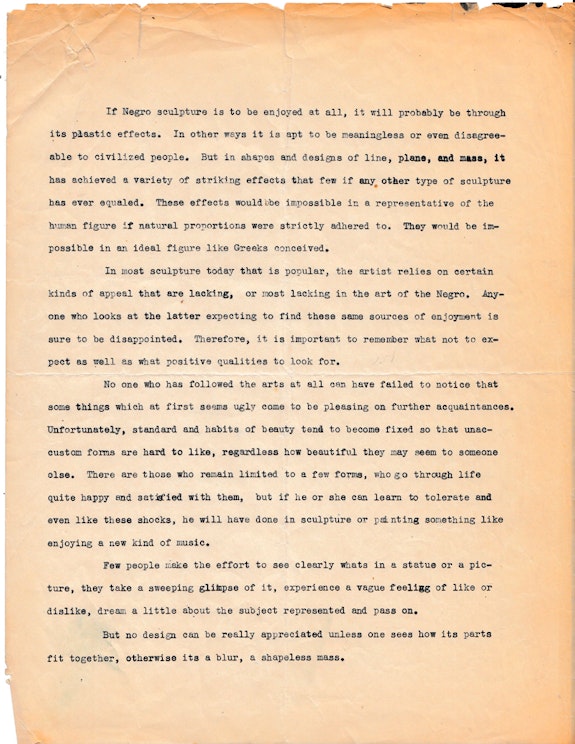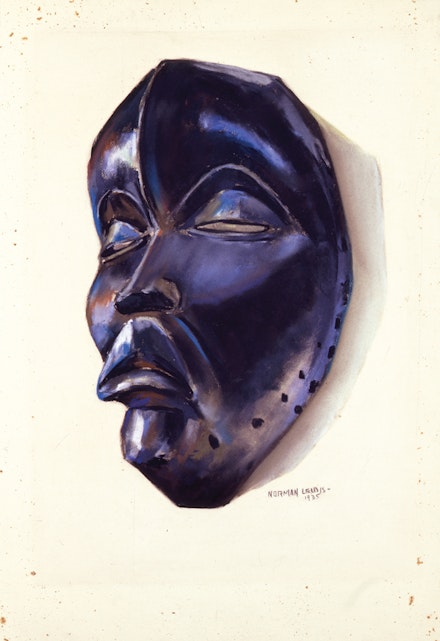Verbatim
NORMAN LEWIS: Behind the Mask
In 1919, at the age of ten, Norman Lewis declared his intention to become an artist after watching a woman paint war scenes outside a shop at 133rd Street and Lexington Avenue in his native Harlem. By his mid-twenties, he had variously supported himself as a house painter, elevator operator, cook, taxi driver, professional gambler and merchant marine (traveling to South America and the Caribbean), yet his commitment to painting and drawing never wavered. In 1933, he took studio space at the Savage Studio of Arts and Crafts on West 143rd Street, operated by sculptor Augusta Savage. Soon after, he studied with Raphael Soyer and Arthur Young, a cartoonist and writer for The Masses, and assumed a teaching role with the WPA at the Harlem Community Arts Center. Like the majority of his American contemporaries, Lewis’s initial artistic outlook was largely shaped by prevailing trends in social realist painting and sculpture.
In 1935, Lewis attended the exhibition African Negro Art at the Museum of Modern Art. Deeply inspired by the forms he encountered, he executed colorful pastel drawings—some on sandpaper—of masks from the Baulé and Dan cultures. A typed statement in Lewis’s archive reveals his clear understanding of the severe distinctions between African sculpture and the Greco-Roman model of naturalism that had previously informed his work and teaching. Certainly the MoMA exhibition resonated deeply on a cultural level, as it had with his compatriots Romare Bearden, Charles Alston, and Gwendoline and Jacob Lawrence, but most clearly for Lewis, African art opened a path to the aesthetic possibilities of abstracted “plastic effects.”
Over the following decades, Lewis ventured more daringly and completely into the transcendent and spiritual possibilities of abstraction than any member of his formative circle. Simultaneously, he remained deeply involved in addressing the social and political inequities faced by black artists: he co-founded the Cinque Gallery in Harlem, as well as the activist Spiral Group. A deeper reading of Lewis’s statement on African sculpture and its Western counterpoints, then, might also be read through this dual lens. Noting the role of the "Other" in defining the familiar, and advocating that one can “learn to tolerate and even like these shocks,” Lewis understood that, like the diversity of society, “No one who has followed the arts at all can have failed to notice that some things which at first seems (sic) ugly come to be pleasing on further acquaintances.”


,-1935.jpg?w=440&q=80&fit=max)



